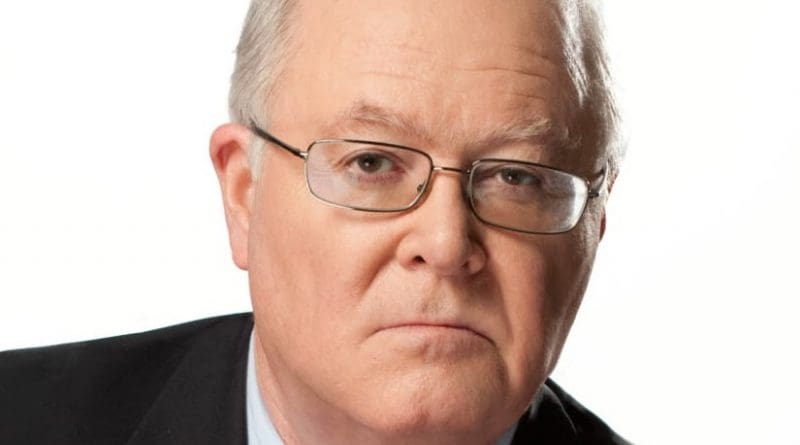NYC Hearing On Monuments Was Disturbing – OpEd
On November 27, the New York City Mayoral Commission on Art, Monuments, and Markers completed its hearings; they were held in all five boroughs. I testified on Thanksgiving eve, in Manhattan. What I witnessed was disturbing.
The hearing was scheduled from 10:00 a.m. to 2:00 p.m. Although I signed up online to speak, I got to the assigned venue at 9:10 a.m., hoping to enhance my chances of speaking.
The guards I spoke to had no idea about any hearing on monuments, and directed me to go around the corner to another address. When I spoke to those guards, they said the hearing does not begin until 10:00 a.m. and I should wait outside. It was raining. I asked if I could stand inside, off to the side, and they said no.
Shortly before 10:00 a.m., the guards allowed those waiting outside to enter. We were directed to the second floor, where we waited in a hallway until 10:30 a.m.
Once seated, the commission’s members introduced themselves. Then we heard about the purpose of the hearings. From what was said, it was apparent that most of the panel members were on the left. But all of them were fair to those who testified, showing no partiality.
We watched a short video and then, at 10:45 a.m., the first three persons selected to testify were called to the front.
Everyone was told they had three minutes to speak; a timer was set off to the side. No clapping, shouting, etc. was allowed, but if people in the gallery liked what they heard, they could wave their hands in the air in support. There were approximately 200 people present, roughly split between those who came to testify and observers.
It was evident from the get-go that most of those who came to testify were left-wing activists. They were pros. Some made it clear that they had already testified in other boroughs. Who were they? The Occupy Wall Street and Black Lives Matter crowd.
The hatred for America was palpable. The first speaker, after condemning America in the most vile and sweeping terms, said that if the panel did not approve removing the statue of Columbus in Columbus Circle, he and his followers would forcibly take it down.
This elicited a massive wave of hands in support. The haters did not see the irony of accusing Columbus of being tyrannical while boasting of their contempt for the law. That’s because they were weaned on the Howard Zinn thesis of the American founding (Zinn, who once was a member of the Communist Party, authored the most widely used radical history textbook on college campuses).
The haters broke along bimodal age lines: most were in their twenties; some were of the Sixties generation. This makes sense. Most Americans who are in their thirties, forties, and fifties have their own families. Moreover, they were raised in times of relative placidity compared to the 1960s or today. Also, it was the day before Thanksgiving, a time when most normal people spend time with their family, not with their comrades.
Among the normal people who came to testify, most were Italian. They came to defend Columbus, and they did a fine job, notwithstanding the hostile reception they received. There was one young woman—she was from the Dominican Republic but her mother was born in Italy—who startled the audience with her strong defense of Columbus.
I got the nod to speak after the break. I am not one to tout credentials, but after listening to panel members cite their achievements—many were academicians—I mentioned mine. Unlike the other normal people who spoke, I did not address Columbus (except at the end as a sign of solidarity with the Italian Catholics who spoke). I spoke about the dark side of an American icon, Frederick Douglass.
Douglass was an ex-slave, abolitionist, and a supporter of women’s rights. Unbeknownst to most, he was also an anti-Catholic bigot. He held a particular animus against Irish Catholics, blaming them, not the English, for their plight. He was in Ireland in 1845 when the English stole food from the Irish during the famine, yet he never objected.
After making my case against Douglass, I emphasized that I did not want the statue of him removed from Central Park. I explicitly condemned all attempts at cultural cleansing. The room was silent; there was no hand waving of any kind.
I sought to make two points. First, removing the monuments and statues of controversial persons is a very dangerous road to go down. Is there any public figure—or for that matter private person—who is so squeaky clean that he has nothing to regret? Not only that, but those leading the charge against revered American figures proved just how badly tainted they are.
In making my second point, I said I was “too mature” to take a harsh position against Douglass. He had done great good, I said, and the times in which he lived were different, so to indict him on the basis of his anti-Catholic side (the Church was “Satan” he said), was not entirely fair.
If these hearings prove anything, it is that most New Yorkers, like most Americans, are normal: they have better things to do (like preparing the stuffing) than listen to anti-American propaganda over the holidays. The activists made it clear that they do not speak for most of us. Indeed, they are an angry, arrogant, and badly educated gang of haters.

